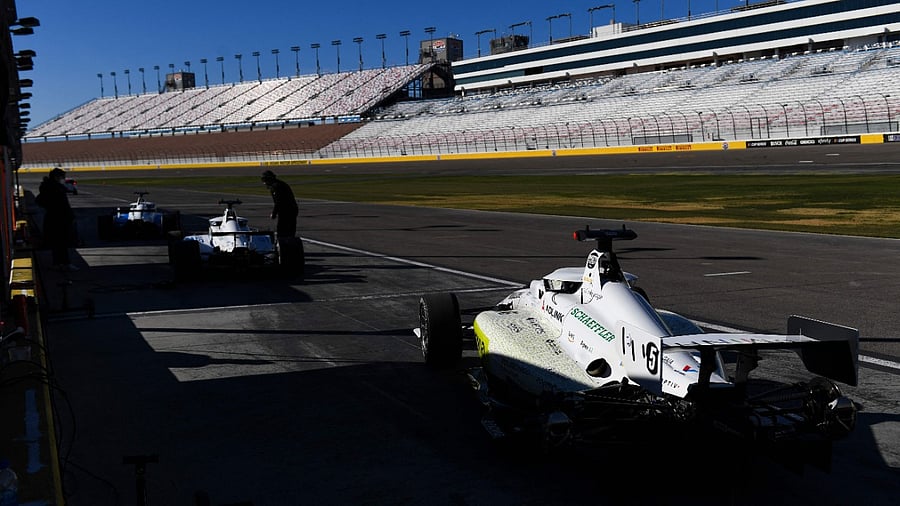
A racecar with nobody at the wheel snaked around another to snatch the lead on an oval track at the Consumer Electronics Show in Las Vegas Friday, in an unprecedented high-speed match between self-driving vehicles.
Members of the Italian-American team PoliMOVE cheered as their Formula 1 racecar, nicknamed 'Minerva,' repeatedly passed a rival entered by South Korean team Kaist. Minerva clocked nearly 185 kilometres per hour when it blew past the Kaist car, easily beating the top speed hoped for by race organisers.
Every racer was deemed a winner by organisers, who saw the real victory as the fact that self-driving algorithms could handle the high-speed competition. "It's a success," Indy Autonomous Challenge (IAC) co-organiser Paul Mitchell told AFP before the checkered flag was waved.
The race pitted teams of students from around the world against one another to rev up the capabilities of self-driving cars, improving the technology for use anywhere.
Last October, the IAC put the brakes on self-driving F1 cars racing together to allow more time to ready technology for the challenge, opting instead to let them do laps individually to see which had the best time. "This almost holds the world record for speed of an autonomous car," PoliMOVE engineer Davide Rigamonti said.
The single seat, usually reserved for a driver, was instead packed with electronics.
PoliMOVE had previously blown a shot at victory in a race held last October in Indianapolis — wherein it clocked 250 kilometres per hour — before skidding out on a curve, according to Rigamonti.
Friday, it was the South Korean entry that spun out after overtaking a car fielded by a team from the University of Auburn in the southern US state of Alabama. "The students who program these cars are not mechanics; most of them knew nothing about racing," said IndyCar specialist Lee Anne Patterson. "We taught them about racing."
Also Read — Tesla Model Y gets 'Top Safety Pick' designation
The students program the software that pilots the car by quickly analysing data from sophisticated sensors. The software piloting the cars has to anticipate how other vehicles on the course will behave, then manoeuvre accordingly, according to Markus Lienkamp, a professor at Munich, TUM, which won the October competition.
Nearby, Lienkamp's students are glued to screens. "It plays out in milliseconds," said Mitchell. "The computer has to make the same decisions as a human driver, despite the speed."
The IAC plans to organise other races on the model of Friday's -- pitting two cars against each other, with the hope of reaching a level sufficient to one day launch all the vehicles together.
Watch the latest DH Videos here: